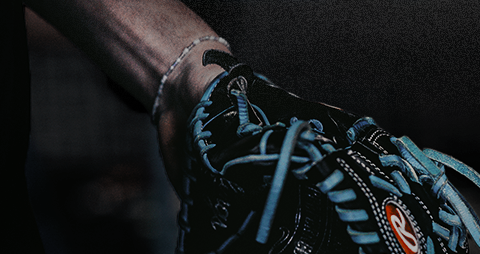Training Plateaus: Embracing The Grind
In the pursuit of athletic excellence, progress is often hailed as the ultimate measure of success. We tend to associate improvement with a steady upward trajectory, assuming that every day of training will bring us closer to our goals. However, the reality is far from this linear progression. At Kinetic Performance Institute (KPI), we understand that dips and plateaus are not only common but also crucial elements of the athletic development process. In this blog post, we will explore the nature of progress in sports training, with a specific focus on baseball pitcher velocities, and shed light on KPI’s system for tracking athletic progress and overcoming plateaus.
Understanding Training Plateaus
Imagine investing countless hours of dedication, sweat, and determination into your training, only to find yourself stuck in a seemingly endless plateau. It’s frustrating, demoralizing, and can make you question your abilities. Many athletes experience this phenomenon, leaving them puzzled and searching for answers. The truth is, progress in sports is rarely a smooth upward climb, but rather a journey marked by peaks and valleys.
When progress stalls, doubt can creep into an athlete’s mind, causing anxiety and self-doubt. The relentless pursuit of improvement can become disheartening, leading some to question if they are destined to remain stagnant or if they have reached their physical limits. These thoughts can be overwhelming and hinder an athlete’s mental and physical well-being.
KPI’s Approach to Plateaus
At KPI, we believe that plateaus are not roadblocks but opportunities for growth. By understanding and embracing the natural ebb and flow of progress, athletes can navigate through these challenging phases and emerge stronger on the other side. Our systematic approach to tracking athletic progress ensures that we are not only aware of plateaus but also equipped to address them effectively.
KPI utilizes advanced tracking systems to monitor athletes’ performance metrics, including baseball pitcher velocities. By meticulously analyzing data and identifying patterns, we can detect when an athlete’s progress has plateaued or hit a dip. This data-driven approach enables us to make informed adjustments to training programs, ensuring that athletes continue to progress and break through these plateaus. We track athletes’ progress through our advanced technology, including…
- Hawkin Dynamics Force Plates – We evaluate an athlete’s Central Nervous System and determine which programs are most appropriate for an athlete in the developmental stage they are in
- Proteus – We measure the athletes’ rotational capacities and provide objective feedback for the staff to monitor their progress
- ArmCare.com – We monitor pitcher’s strength and Range of Motion using sensors to determine if a pitcher is progressing and/or an a state of fatigue
- Trackman – We are able to monitor a pitcher’s ball flight metrics to ensure they are moving towards our goals for them
- Blast Motion – We track each swing a hitter makes and program them based on their swing deficiencies
- Hittrax – We use the batted ball metrics to ensure the hitters are moving towards their goals
Baseball Pitcher Velocities and Plateaus: In the context of baseball pitchers, the relationship between velocity and strength is complex. Athletes may experience periods where their strength improves while velocity remains stagnant, and vice versa. This discrepancy can be frustrating, but it is a normal part of the training process. Plateaus in velocity do not necessarily indicate a lack of progress; rather, they often signify that the body is adapting and preparing for the next surge of growth.
Embracing Plateaus: Mental and Physical Tips for Breakthroughs:
- Mental Resilience: Plateaus require mental fortitude. Focus on maintaining a positive mindset, setting realistic expectations, and embracing the journey rather than fixating solely on the end result. Remember that plateaus are temporary and offer valuable lessons and opportunities for growth.
- Vary Training Approaches: When progress stagnates, it may be necessary to adjust training methodologies. At KPI, we specialize in tailoring training programs to individual athletes, ensuring that they challenge themselves in new ways. Exploring different exercises, intensities, or training modalities can help break through plateaus and stimulate progress.
- Recovery and Regeneration: Plateaus can sometimes be a sign of overtraining or inadequate recovery. Pay close attention to your body’s signals and prioritize rest and rejuvenation. Incorporating proper sleep, nutrition, and targeted recovery techniques into your routine can optimize training adaptations and propel you past plateaus.
In the pursuit of athletic excellence, progress is not always a straightforward path. Dips and plateaus are an integral part of the journey, providing athletes with an opportunity to grow mentally and physically. At KPI, we understand the importance of tracking athletic progress, identifying plateaus, and making necessary adjustments. By embracing plateaus and implementing mental and physical strategies, athletes can break through these challenging phases, unlocking their true potential and achieving the success they strive for. Remember, plateaus are not roadblocks but stepping stones towards greatness.

